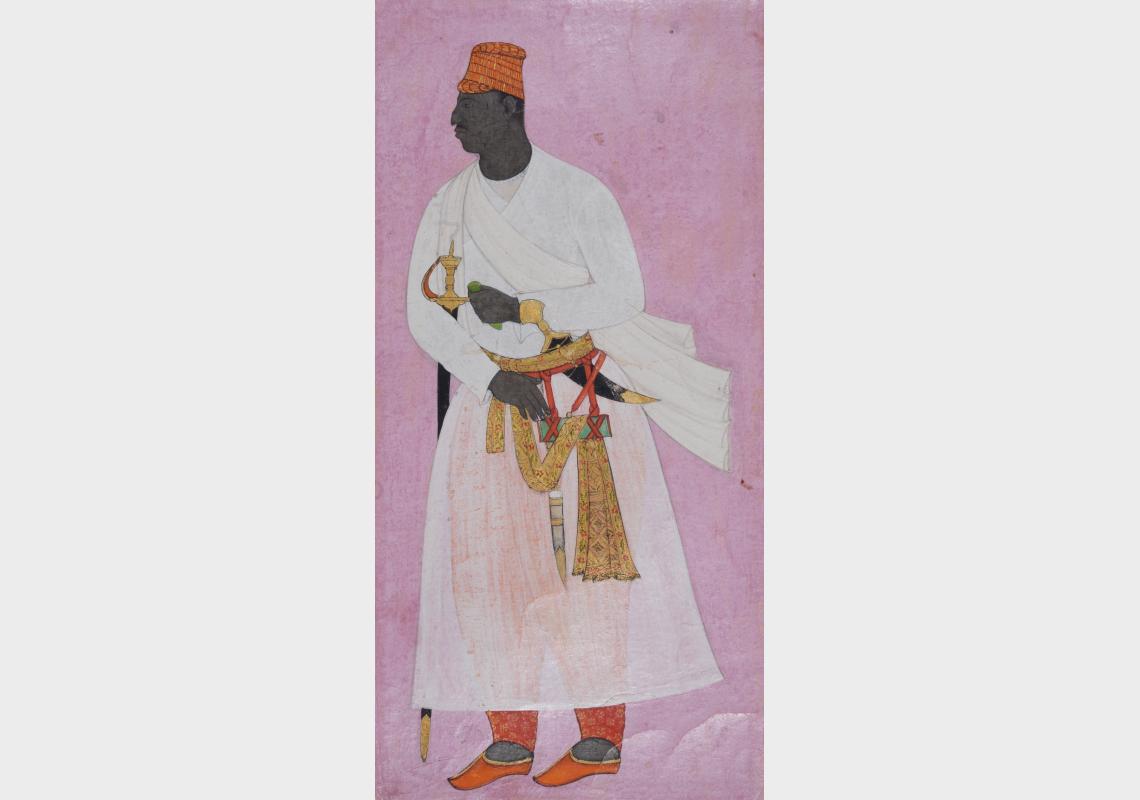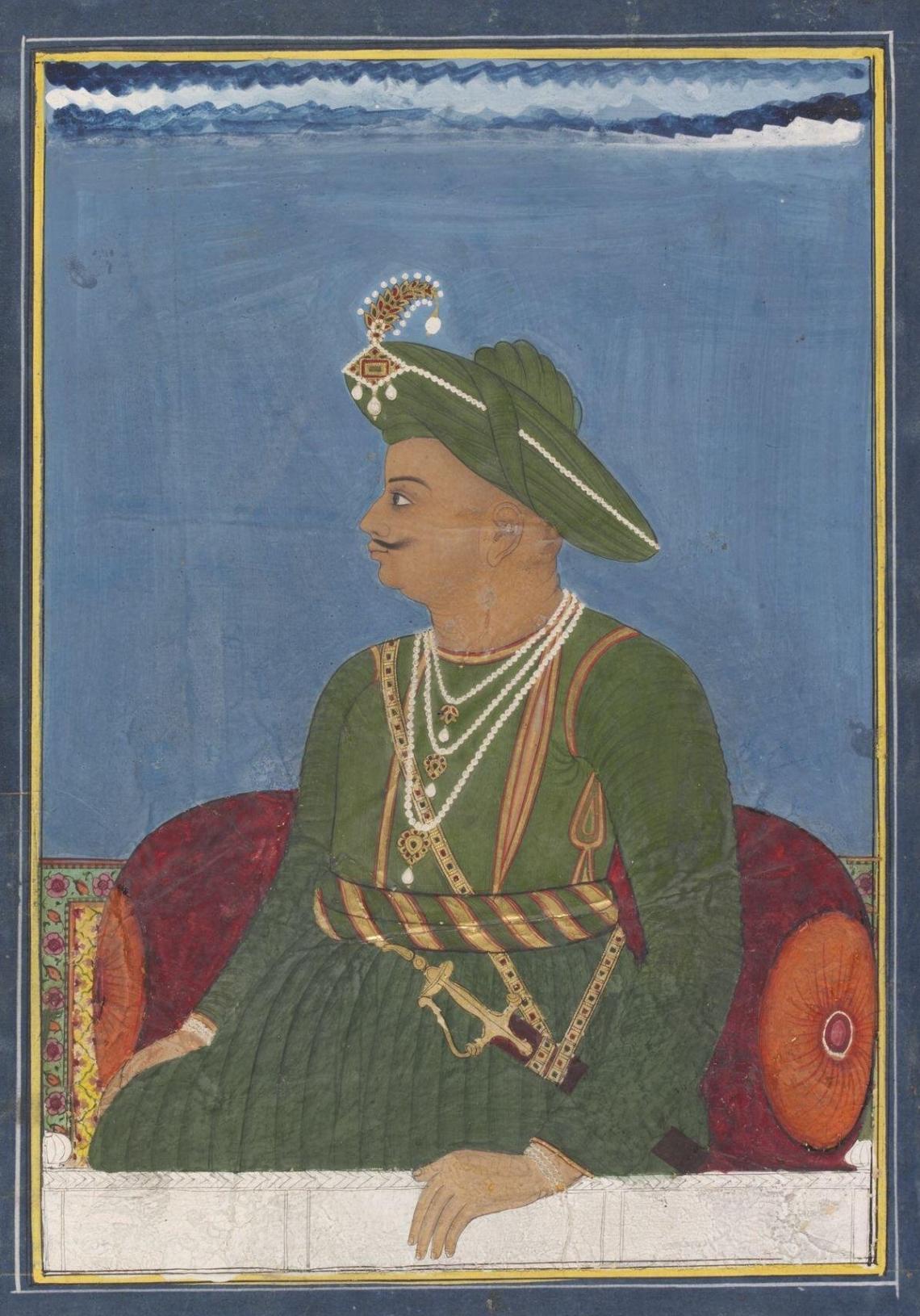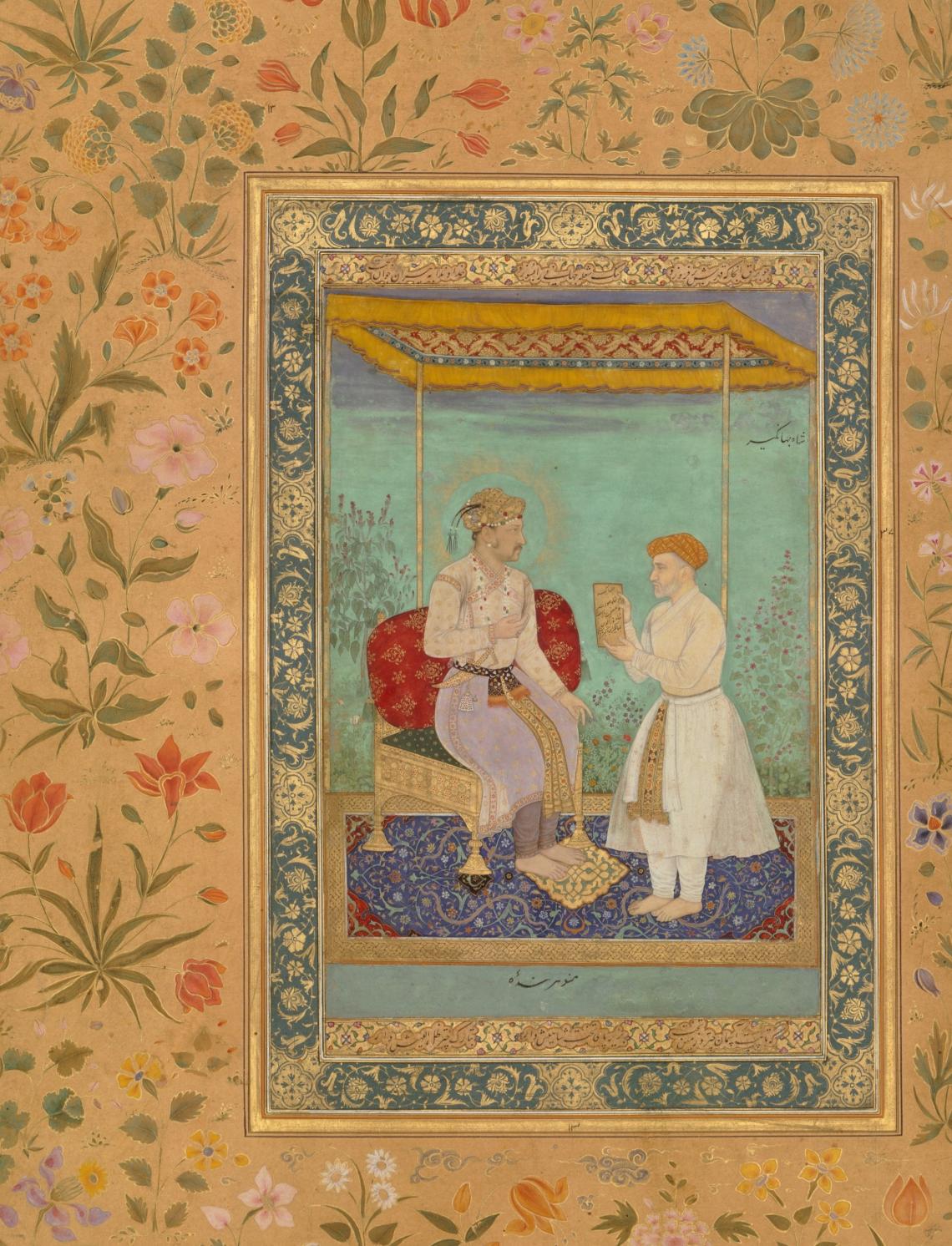Portrait of Malik Ambar, Deccan, India, c. 1605–1610. Image courtesy of National Museum, New Delhi, India.
Tipu Sultan, Mysore, India, c. 1790, Opaque watercolour on paper.
A broad sash worn around the abdomen, or at the waist, the cummerbund covers the parts of the wearer’s shirt and trousers. Its name comes from the Urdu term kamar band, meaning “waistband,” and it is woven in cotton, wool, silk or synthetic fibres, most commonly in black, red or white. The cloth may also be embroidered with floral and vine motifs or left plain. Traditionally, the cummerbund had several pleats in the cloth, used for storing items including coin and tobacco pouches and ceremonial daggers. It was worn to support the lumbar region of the body, for warmth and to protect the skin against the harsh climate of the tropics.
Jahangir and His Vizier, I'timad al-Daula, Folio from the Shah Jahan Album, Manohar, c. 1615, Ink, opaque watercolour, and gold on paper.
While it is difficult to ascertain definitive dates for the origin of the cummerbund, it is present in various cultures such as the Ottoman Empire, pre-Modern Albania, Crete, Nepal and Britain as a part of their ceremonial, military and everyday dress. In India, the cummerbund was part of an officer’s uniform in the British army as an alternative to the waistcoat; a trend that was incorporated into the military uniform of the sepoys. By the late eighteenth century, British soldiers serving in India wore a flannel woollen cummerbund, often referred to as a “cholera belt.”
In recent times, the use of cummerbunds has shifted to a decorative piece of garment worn during ceremonies displaying a marked shift from its historical use.
This article first appeared in the MAP Academy Encyclopedia of Art.
The MAP Academy is a non-profit online platform consisting of an Encyclopedia of Art, Courses and a Blog, that encourages knowledge building and engagement with the visual arts and histories of South Asia. Our team of researchers, editors, writers and creatives are united by a shared goal of creating more equitable resources for the study of art histories from the region.





